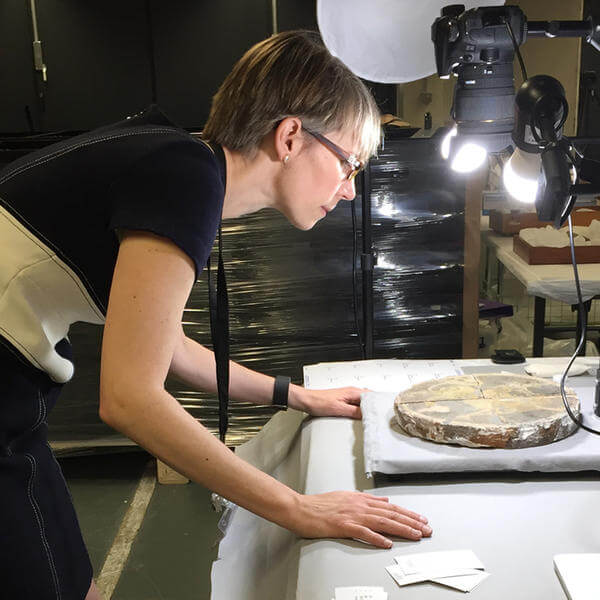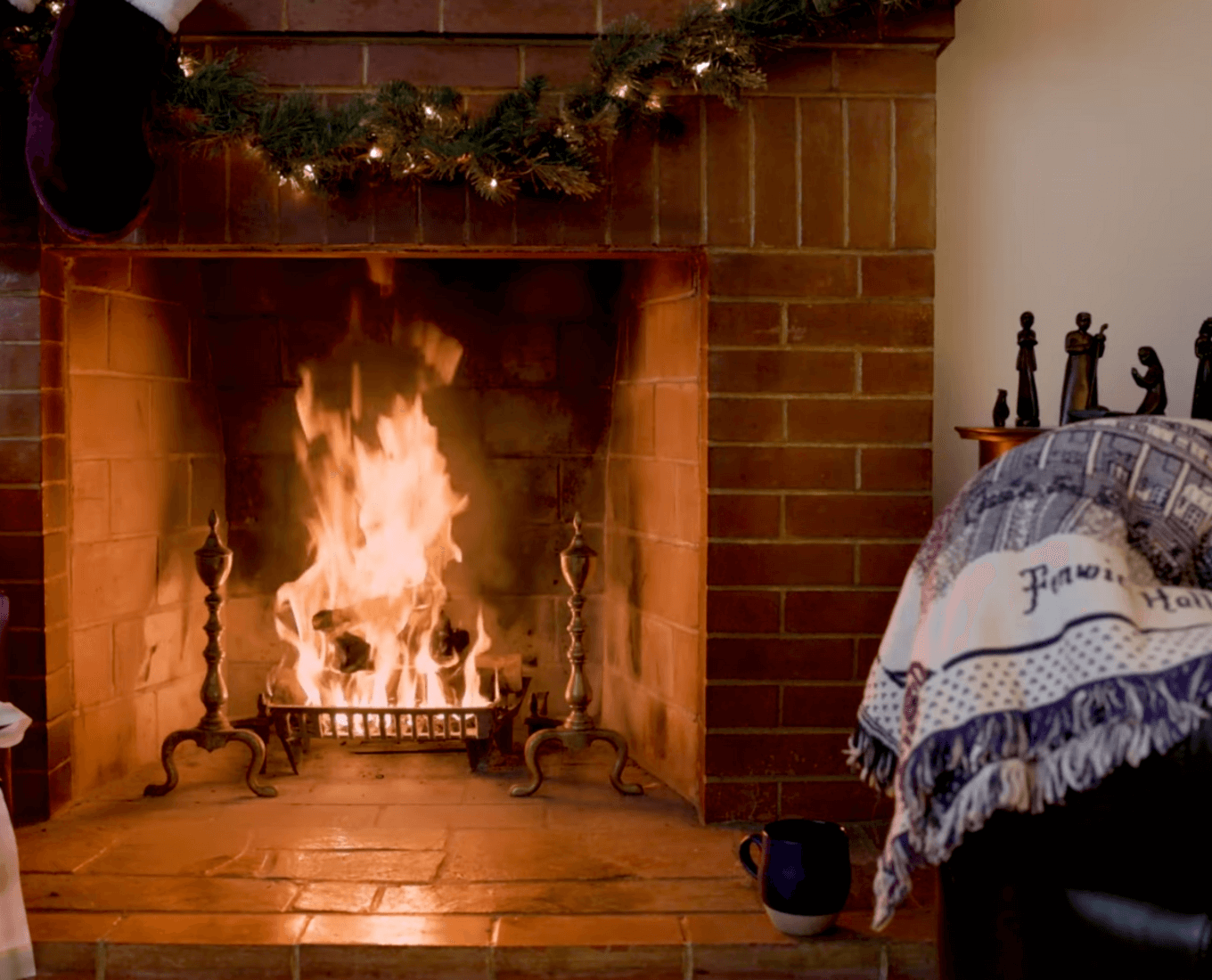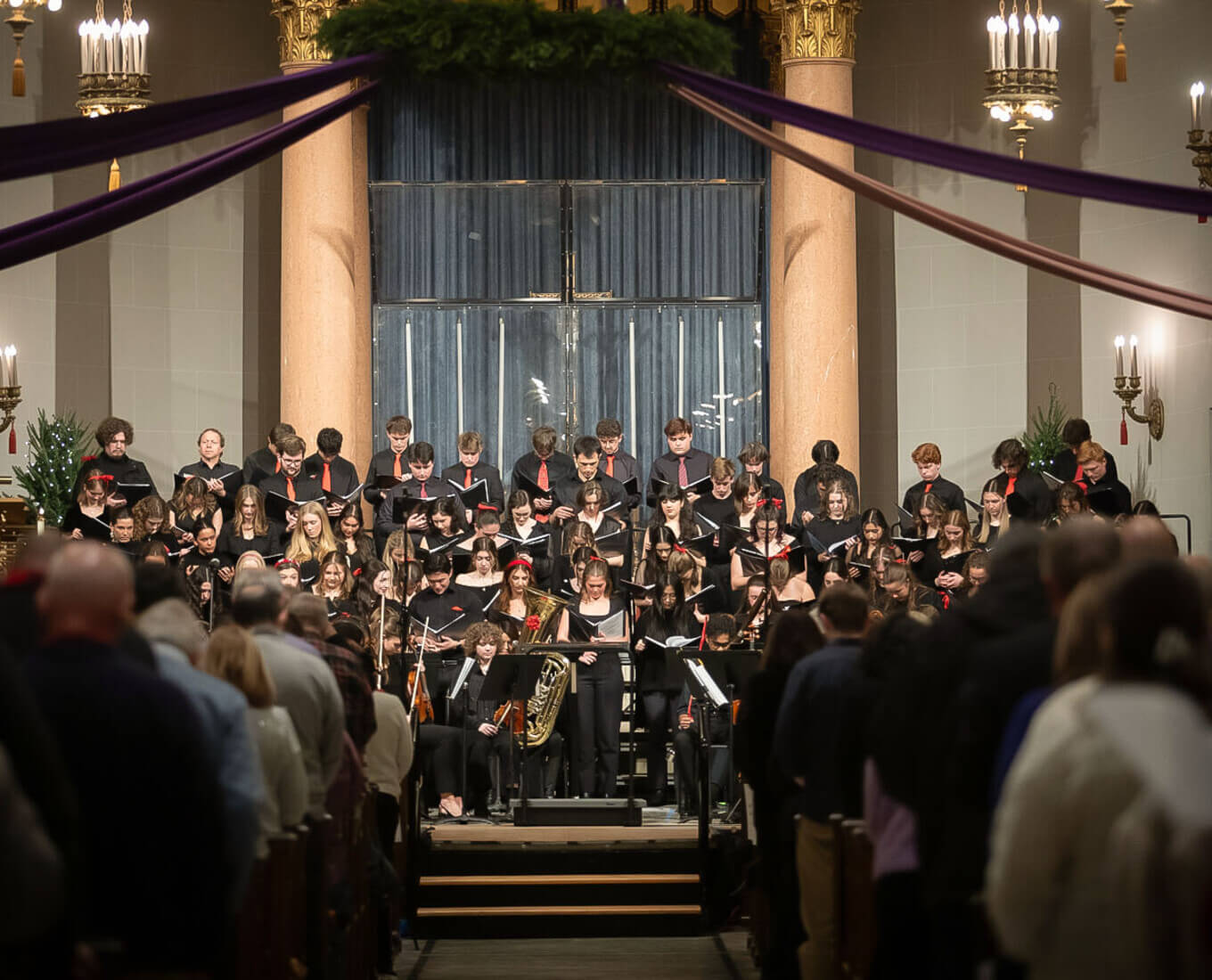History once written by conquerors is being retold through research and fact via the work of Amanda Luyster, assistant professor of visual arts at the College of the Holy Cross, her students and an upcoming exhibition at the College’s Iris and B. Gerald Cantor Art Gallery, “Bringing the Holy Land Home: The Crusades, Chertsey Abbey, and the Reconstruction of a Medieval Masterpiece.”
Opening on Jan. 26 and running through April 6, the work of Luyster and her students will provide an often-overlooked perspective on the relationship between Islam and Christianity.
“There are a lot of examples of appreciation and simple tolerance that — because they don’t fit the overarching narrative, because it’s a complicated narrative — get pushed under the rug,” said Luyster, who is the exhibition’s guest curator.
To launch this investigation, Luyster and Janis Desmarais, visual literacy and arts librarian, with help from student research associate Martina Ummuna '18, brought to life centuries-old tiles that were commissioned around 1250 by the English King Henry III and his queen, Eleanor of Provence, as a form of propaganda. Henry III used the story told through the tiles as a way to raise money for his own crusade. The mold-made tiles were initially used in Westminster Palace and were later discovered at the site of England’s Chertsey Abbey, depicting King Richard I’s victory over Saladin, the Sultan of Egypt in the Third Crusade (1189–1192).
“That’s not true; Richard never met Saladin in a single combat. They never even saw each other face to face,” Luyster said. “The whole Crusade — the Third Crusade — ended in a truce, and Richard came home and decided to fight the French king.” Richard I was later killed in France.
Co-organized with Meredith Fluke, director of the Cantor Art Gallery, the exhibition brings together works from some of the most important collections of medieval art, including the British Museum, the Metropolitan Museum of Art, the Museum of Fine Arts, Boston and the Worcester Art Museum, among others. Visitors will be able to experience a reconstruction of the long-destroyed original floor, once found at the chapter house at Chertsey Abbey.
“This is a very ambitious project, and particularly in a year when we have just moved the gallery to the new Prior Performing Arts Center,” Fluke said, “but we are excited to have the opportunity to highlight the contributions of Holy Cross research and teaching, as they are integral to the Cantor’s program.”
How students aided the project
Luyster is a medieval art historian whose original interest was in the tiles, not necessarily the Crusades. Tile fragments were unearthed in the 1850s; in the 1970s, researchers used them to reconstruct the tiles portraying Richard I and Saladin. Until now, scholars relied on those physical reconstructions and black-and-white drawings of the other tiles.
In addition to the work of Desmarais and Ummuna, Luyster had other early collaborators on the project. Neel Smith, professor of classics, and then-student Therese Starshak '17 wrote text data-mining software to aid in hypothesizing the words that surrounded the tiles. The combined efforts of the reconstruction revealed that the subject of the tiles, which had been previously understood as a series of combats, was all about the Crusades.
After determining a spring 2023 exhibition would be held, students in Luyster’s Kings and Caliphs: Arts of Luxury course developed supporting materials for it, such as a website, which allows visitors to learn more about each item through photos, student-created videos and text.
“It has heavily relied on student involvement and, if I’m honest, student excitement,” Luyster said. “I’ve been working on this project for years, and sometimes my energy flags, but it’s so uplifting to go into a classroom of students who are excited to work on this.”
Luyster’s research doesn’t overlook the violence and bloodshed of the Crusades. An episode that still haunts her is the recent discovery of a Jewish family, including children, who 800 years ago were murdered and thrown down a well in Norwich, England. This event took place due to the anger against non-Christians that arose in England under the reign of Richard I, the king depicted in the tiles. Until diving into research surrounding the Chertsey tiles, they were events unfamiliar to her.
“I never want to pass over or minimize the violence. It took me a while to realize the violence is not just happening in the Holy Land and it’s not just happening between Christians and Muslims,” Luyster said. “It took me a while to realize this is not just soldiers fighting soldiers. It happens in towns. It happens in cities. It happens all over Western Europe. It happens to people who have nothing to do with Islam and the Holy Land. It’s because of all this furor that’s stirred where if you’re not Christian, you’re the archenemy.”
But violence has traditionally been the main narrative associated with the campaigns.
“This idea that people have of this massive, united Muslim force against a massive, united Christian force is completely not true. The Muslim forces were fragmented. The Christian forces were fragmented,” Luyster said. “There are many examples of Christians being allowed to worship as they feel appropriate under Muslims and vice versa.”
The tiles also depict the cross-pollination of Islamic- and Christian-made art objects. The way the tiles look, Luyster said, is influenced by Islamic and Byzantine silks. The exhibition will display some of these tiles alongside some of the silks that could have inspired them.
Through the tiles that depict a propagandistic Christian victory, portraying their Muslim foes as weak, Luyster hopes visitors will actually understand that the English and other Europeans were impressed and inspired by the cultural productions, such as silks, made by those of different faiths.
“The way we understand the past helps us to understand where we are in the present and our imagination for the future,” she said. “If we understand the past as this cataclysmic monochromatic struggle between Christianity and Islam, then we tend to understand today also in those terms and we tend to imagine that tomorrow is also going to happen in those terms. I don’t think that has to be the case. I don’t think it is the case.”



